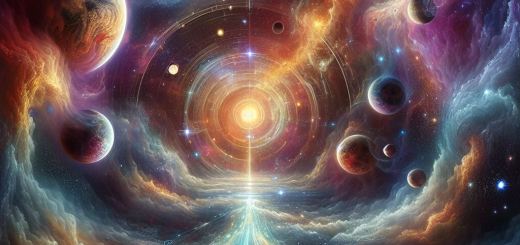Galaxy

A galaxy is a vast system of stars, stellar remnants, interstellar gas, dust, dark matter, and other celestial objects, all bound together by gravity. The observable universe contains hundreds of billions of galaxies, each varying in size, structure, and composition. Galaxies are classified into several main types based on their shape and appearance.

Types of Galaxies
Spiral Galaxies
- Structure: Spiral galaxies consist of a flat, rotating disk containing stars, gas, and dust, along with a central bulge made up mostly of older stars. The disk often features spiral arms that emanate from the central bulge.
- Subtypes:
- Normal Spirals (Sa, Sb, Sc): Classified based on the tightness of their spiral arms and the size of their central bulge. Sa galaxies have tightly wound arms and large bulges, while Sc galaxies have loosely wound arms and smaller bulges.
- Barred Spirals (SBa, SBb, SBc): Similar to normal spirals but have a central bar structure made up of stars. The arms of barred spirals originate from the ends of the bar.
- Examples: The Milky Way, Andromeda (M31).
Elliptical Galaxies
- Structure: Elliptical galaxies range from nearly spherical (E0) to highly elongated (E7). They have a smooth, featureless light profile and lack the spiral arms seen in spiral galaxies.
- Characteristics: They contain older, red stars and have very little gas or dust, which means minimal new star formation. These galaxies are more common in large galaxy clusters.
- Examples: M87, Centaurus A.
Lenticular Galaxies (S0)
- Structure: Lenticular galaxies are an intermediate form between spiral and elliptical galaxies. They have a central bulge and a disk like spirals but lack significant spiral arms.
- Characteristics: They contain older stars and very little interstellar matter, leading to minimal new star formation.
- Examples: NGC 5866.
Irregular Galaxies
- Structure: Irregular galaxies do not fit into the categories of spiral or elliptical galaxies. They have an irregular shape with no defined structure.
- Characteristics: Often rich in gas and dust, leading to significant star formation. They may have been distorted by gravitational interactions or collisions with other galaxies.
- Examples: Large Magellanic Cloud, Small Magellanic Cloud.

Additional Classification
- Dwarf Galaxies
- Structure: Smaller in size and lower in luminosity compared to regular galaxies. They can be found in various forms, including dwarf ellipticals, dwarf irregulars, and dwarf spheroidals.
- Characteristics: Dwarf galaxies often orbit larger galaxies and can be abundant in galaxy clusters.
- Examples: Draco Dwarf, Fornax Dwarf.
Other Notable Types
- Peculiar Galaxies
- Structure: Galaxies with unusual shapes or features that do not fit into the standard categories, often due to gravitational interactions, mergers, or other processes.
- Examples: Antennae Galaxies (NGC 4038/NGC 4039).
- Ring Galaxies
- Structure: These galaxies have a ring-like structure of stars and gas surrounding a central core. The ring is typically formed by a collision with another galaxy.
- Examples: Hoag’s Object.
Galaxies are not only fascinating in their diverse structures but also crucial to understanding the large-scale structure of the universe. Each type of galaxy provides insights into the processes of cosmic evolution, star formation, and the dynamics of gravitational interactions.
Word Count: 496 words


